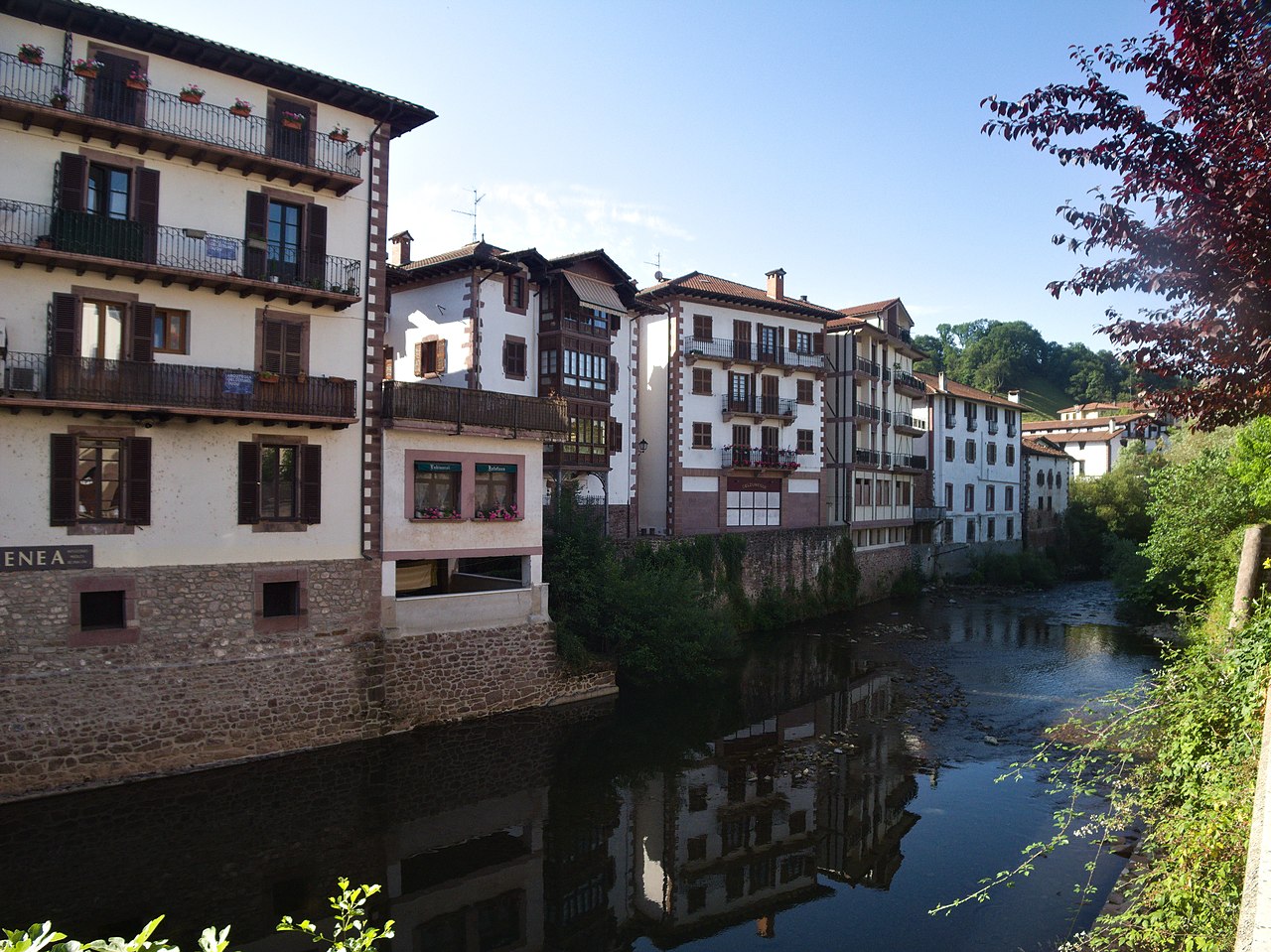
to talk to you about what to see in Elizondo, we have to refer to Baztan Valley, of which it is capital. If you have not visited it, surely you have at least heard of this territory, one of the most unique and beautiful in the Foral Community of Navarra.
It is a valley covered, above all, by beech forests, but also by oak and chestnut groves. It has an extraordinary beauty and also a high degree of symbolism and mythical tradition. he bathes him Bidasoa River and it is framed by peaks like the Legacy, alkurrutz, Capramendi o Pena Alba. We have strayed a bit from our main topic, but it is impossible to explain what to see in Elizondo without taking into account its wonderful natural setting. Now, we are going to focus on what you should visit in this Navarrese town.
Typical streets and manor houses, the first thing to see in Elizondo
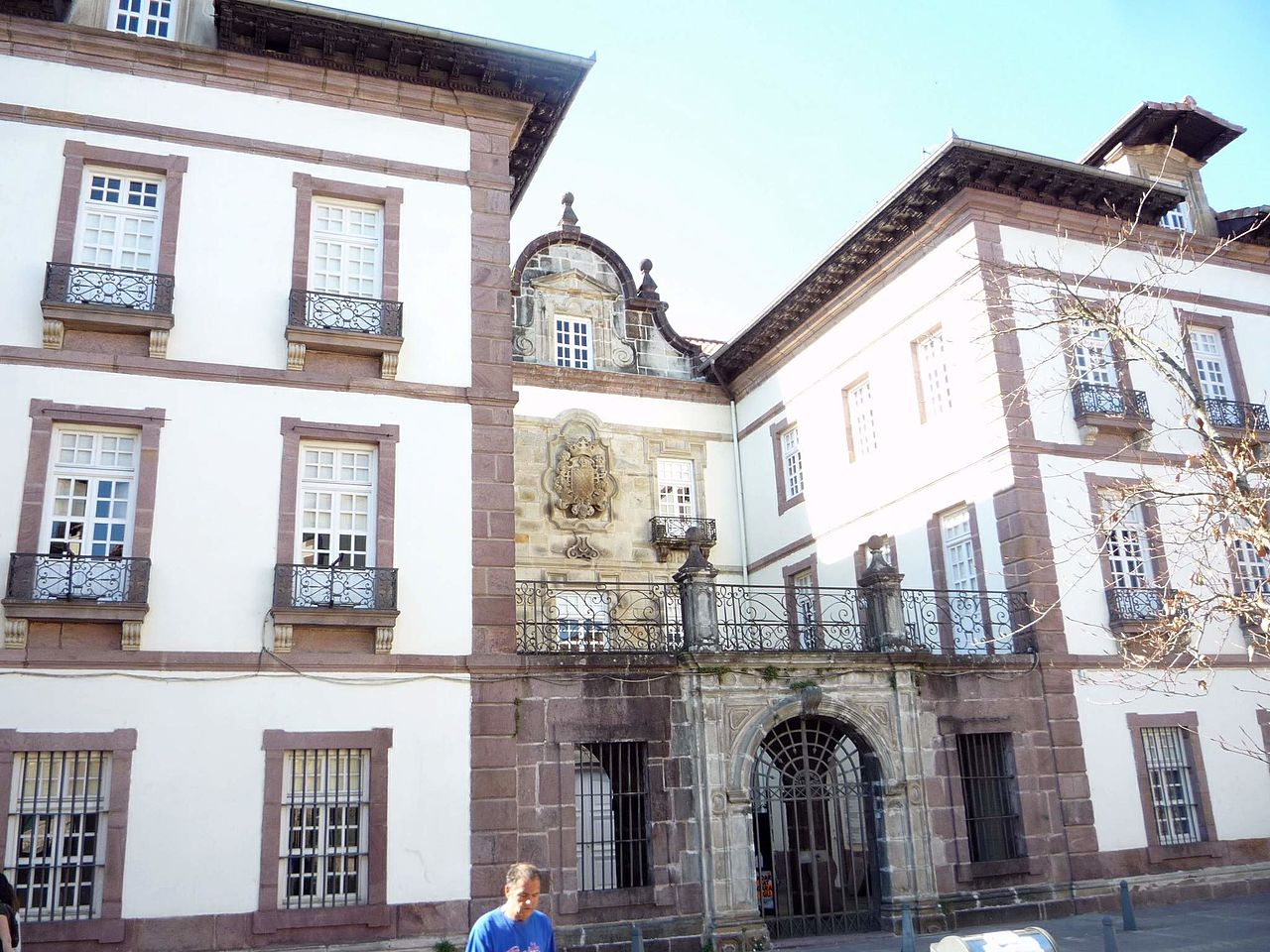
Arizkunenea Palace
As soon as you arrive in Elizondo, we recommend that you stroll through its narrow streets of medieval origin. They make up the genuine essence of the town and, among them, stand out those of Jaime Urrutia (former Calle Mayor) and Braulio Iriarte (or street of the Sun). Also, very close to them you have the santiago street, where is the church that we will talk about later and several houses of Indianos.
This name was received by the emigrants who returned enriched from America and they built sumptuous palaces in their homeland. As a result, they have bequeathed us precious buildings spread throughout the Iberian Peninsula. For example, they are also frequent in the Principality of Asturias.
But, going back to what to see in Elizondo, those streets that we mentioned are also framed by other stately homes. The most emblematic of them is the Arizkunenea Palace, a Baroque construction from the XNUMXth century. Its style is reminiscent of French mansions and owes its name to the person who had it built: Miguel de Arizcun. Do not stop appreciating its imposing central shield and seeing it from the inside. You can do it, since it is now the House of Culture of the town and houses painting and photography exhibitions.
No less beautiful is the datue palace, equally baroque, but somewhat earlier, since construction began in the XNUMXth century. was owned by Agustin de Jauregui, Spanish soldier who served as Viceroy of Peru. It has four floors and is completed by an adjacent farmhouse. His image, at the foot of the Bidasoa River, is one of the most iconic to see in Elizondo.
To the same architectural style responds the Town hall, also built in the XVII. But, in his case, he combines those artistic traits with the elements typical of traditional Navarra mansions. This can be appreciated, above all, in its façade, with its lowered arches on the ground floor and its continuous balcony on the first floor.
The General Meeting of Baztán met there, an institution of medieval origin that was in charge of governing the destinies of the valley. Also, next to the Town Hall, you have a stone or botillo that was used to play lax, one of the oldest modalities of Basque pelota.
Finally, the istekonea house It stands out for its beautiful white façade with balconies and shutters, as well as adorned by a shield. It is also of the traditional Navarrese type and was built between the XNUMXth and XNUMXth centuries. It is also known as Viceroy's House for being linked to another character who served as such in America, in his case in New Granada: Pedro Mendinueta y Muzquiz.
The Church of Santiago Apostol

Church of Santiago Apóstol, one of the essential monuments to see in Elizondo
It was built between 1916 and 1925 to replace another Gothic style from the 1913th century that was badly damaged by the floods that occurred in XNUMX. You will find it in the Fueros square and its two slender neo-baroque towers will draw your attention. Also noteworthy is the rose window in its central part and its colorful stained glass windows on the sides.
Likewise, the façade has a porticoed portico which is accessed through three semicircular arches, the central one a little wider. The temple is built in visible red ashlar and its interior is also attractive. Watch your main altarpiece with an imposing effigy of Apostle Santiago by horse. But, above all, look at some Templar symbols that it has.
Elizondo's religiosity has a history linked to the floods that we have just mentioned. These caused enormous damage both in the town and in the other nearby ones. However, he was saved from them by appearing floating the Sacred heart of the old church. Since then, he has been highly revered by the Elizondarras.
The Txokoto dam and the Ethnological Museum of Baztán
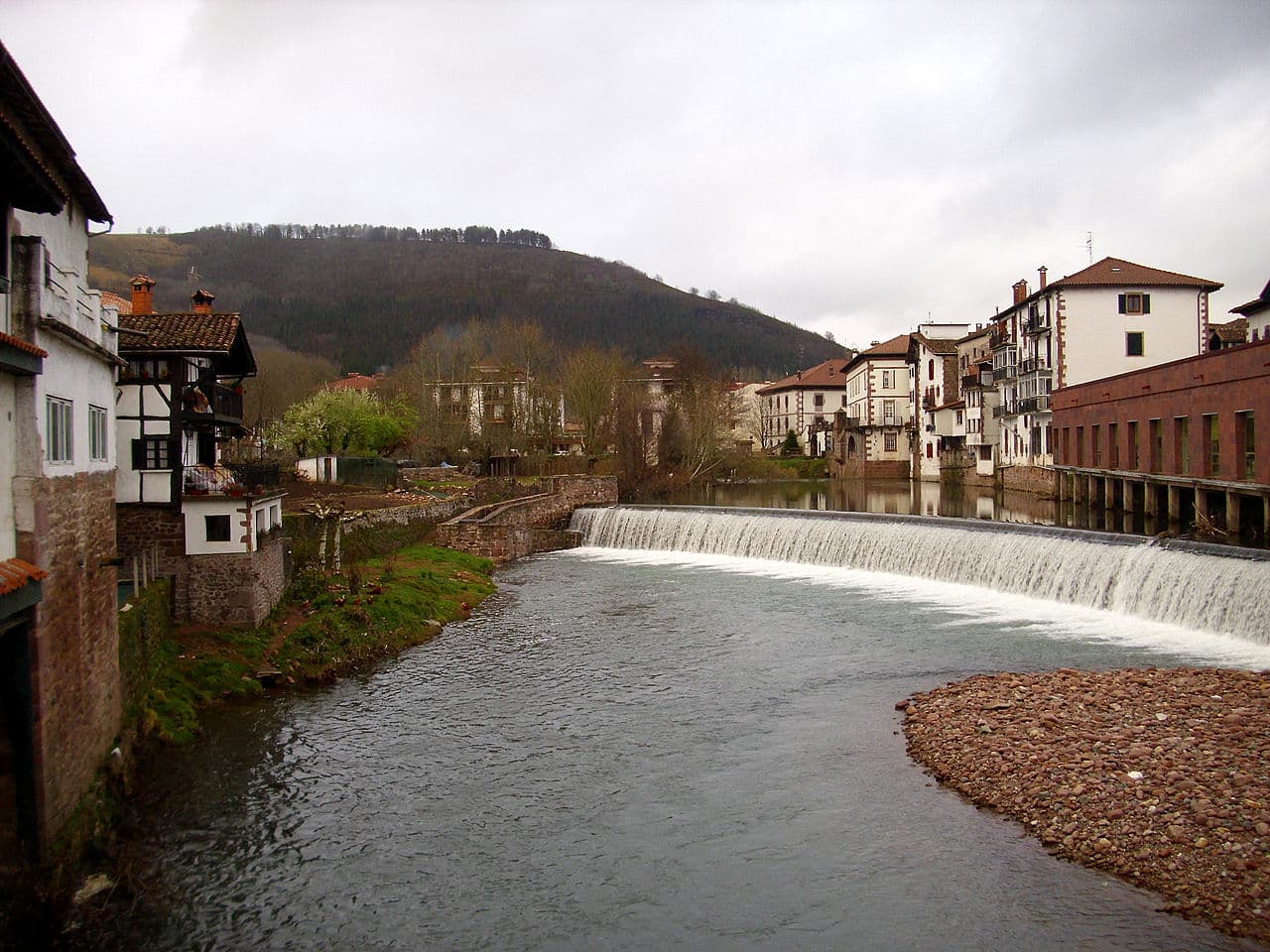
Txokoto Dam
This dam is another of the emblematic places to see in Elizondo, because it forms a postcard landscape framed by the typical large houses of the town. In fact, all visitors photograph it from the Muniartea bridge. It was built to retain the momentum of the Bidasoa River. As if all this were not enough, the monotonous fall of the water will cause you a relaxing effect.
We would also like to advise you to visit the Baztán Ethnographic Museum, but, sadly, they have closed it. He was in the aforementioned Braulio Iriarte street, specifically in the so-called puriosenea house. It housed works by the sculptor Jorge Oteiza and pictures of Javier Ciga. The latter was one of the great Navarrese traditional painters and his works reproduce the traditional life of the area.
But, precisely, the museum was dedicated to the customs and ways of life of the Baztán valley. In it you could see objects, photographs and musical instruments linked to the rural world of yesteryear in the area. However, the star piece of the show was the so-called Menhir of Soalar, with an age of between three and five thousand years and, therefore, of incalculable value. was found by Francisco Ondarra on the mountain that gives it its name and, after many vicissitudes, it is currently in Pamplona.
Although it is closed, we wanted to talk to you about this magnificent museum because we hope that it will reopen to the public soon.
Elizondo in literature
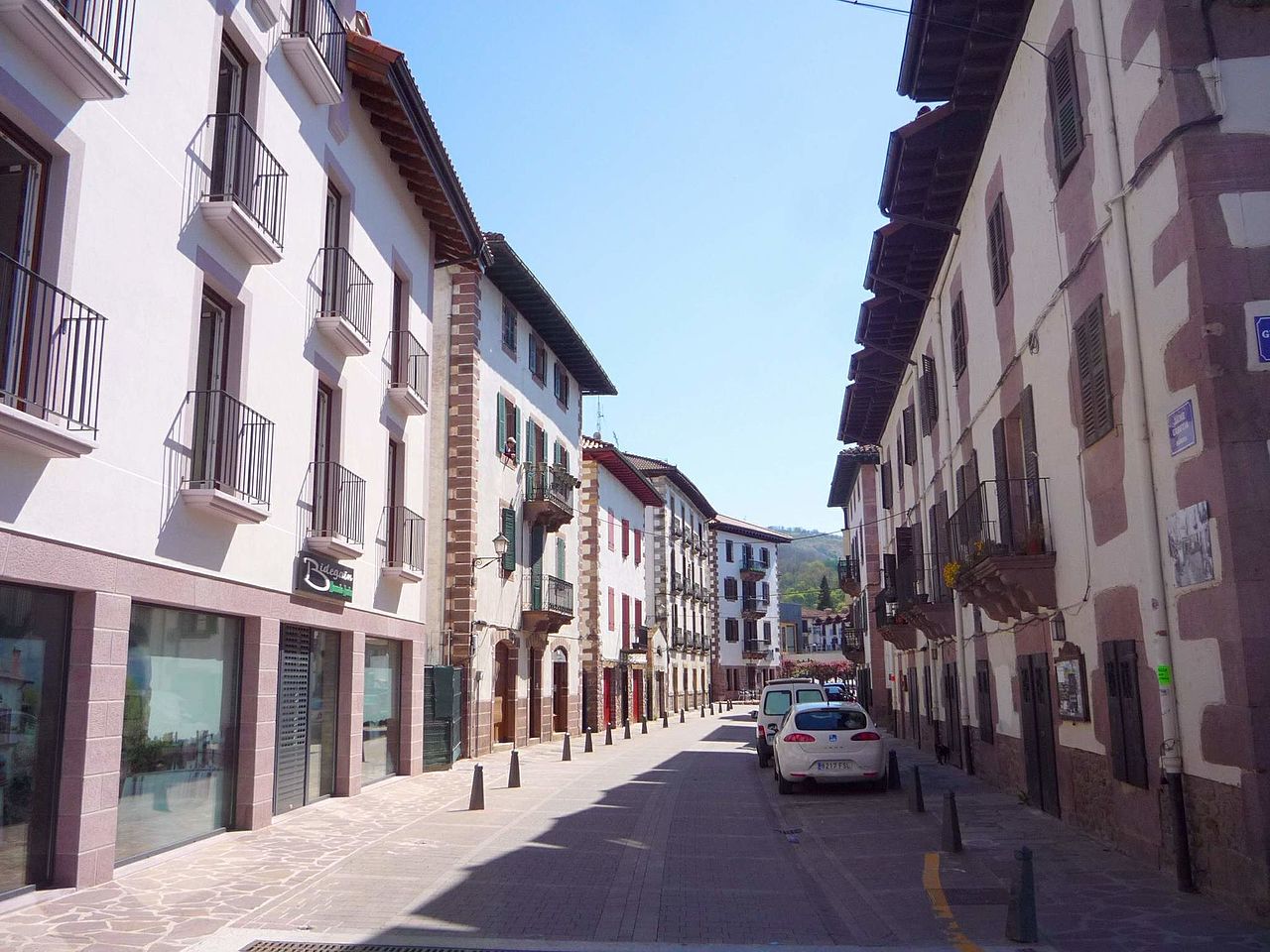
One of the typical streets of Elizondo
As if all the above reasons were not enough to visit this Navarrese town, if you like literature, you have another. Especially if you are passionate about the adventures of the Navarra Foral Police inspector Amaya Salazar, a character created by the writer Dolores Round to star in your Baztán trilogy.
The detective is from Elizondo and must return to the town to find out what is behind the death of a young woman there. Therefore, in the villa you can go through the steps of the character. Among other places, Jaime Urrutía and Braulio Iriarte streets (where his family home was), the cemetery, the Plaza de los Fueros, the Muniartea bridge and even the Hostal Trinkete Antxitonea.
What to see in Elizondo: the surroundings
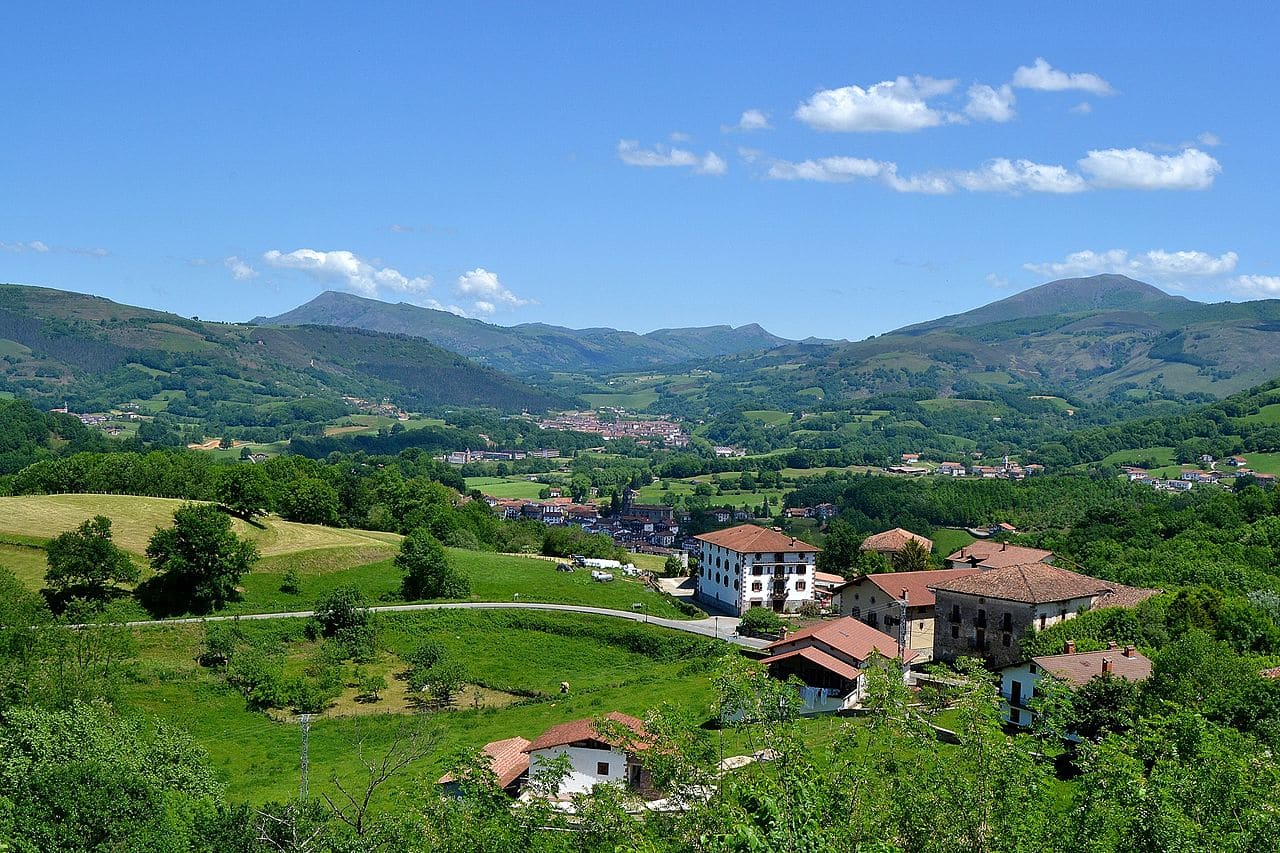
A beautiful view of the Baztán valley
As we have already told you, Elizondo is the capital of the Baztan Valley. Therefore, it offers you wonderful surroundings that we also want to talk to you about. You cannot leave without visiting this beautiful natural enclave with its large forests, its mountain landscapes of the Navarrese Pyrenees and with its places loaded with legends.
Among the latter, you can visit the Urdazubi Urdax prehistoric caves and that of the famous witches of Zugarramurdi. But, on the other hand, you can also discover other towns that are scattered throughout the valley and that have nothing to envy Elizondo. We are going to recommend some of them.
Amaiur or Maya
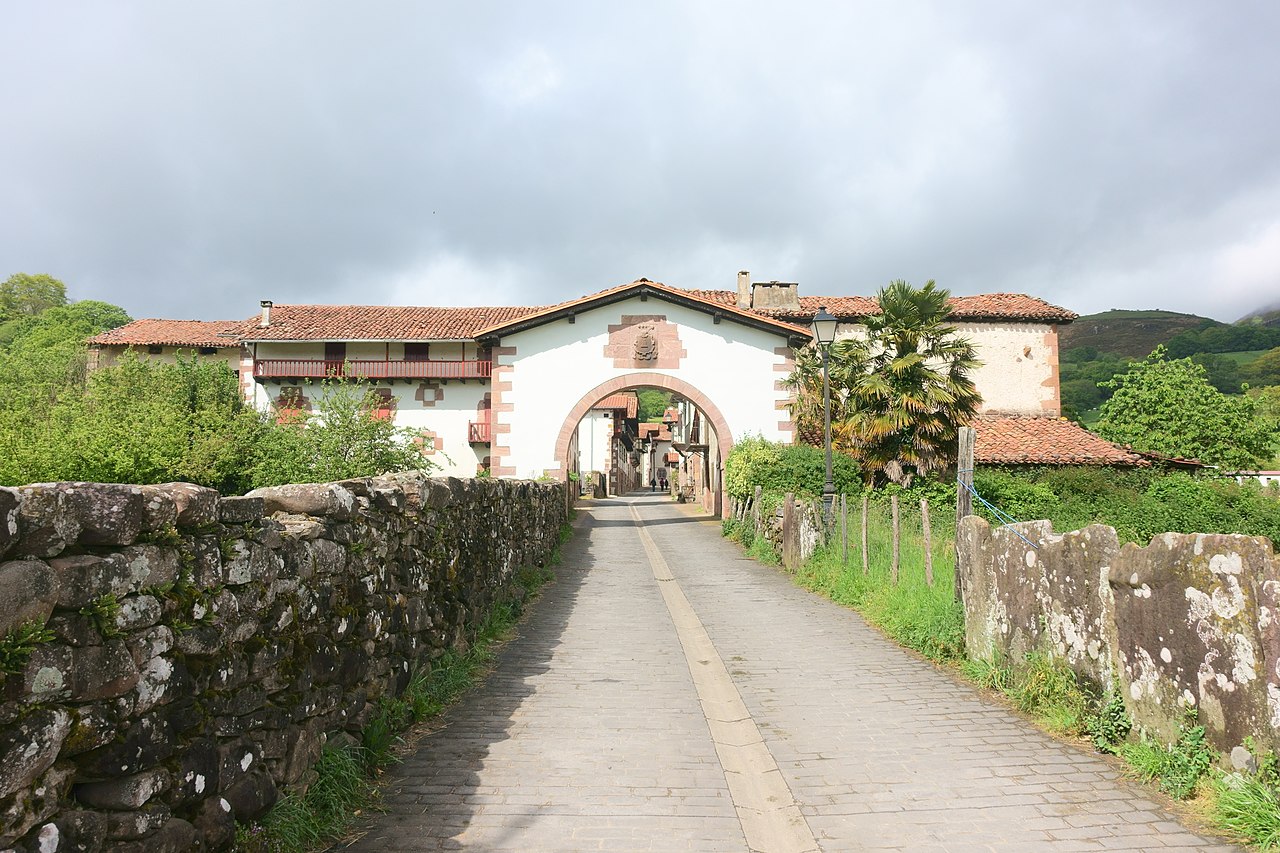
Entrance to the town of Amaiur or Maya
It is another of the typical towns of the Baztán Valley, with its traditional stone houses, its mills and its narrow, cobbled streets of medieval origin. In addition, it had enormous historical importance, since its castle, located on Mount Gaztelu, housed the last Navarrese who resisted the conquest of their kingdom. You can still see its ruins today.
But Maya, as it is known in Spanish, has more places to see. In fact, the entire town seems to have been built accordingly, such is the harmony of its typical houses. All stand out for their flower-adorned balconies and their wooden shutters. But it also has palatial mansions from the XNUMXth century such as those of Arretxea and Arriada.
Even older is the church of Our Lady of the Assumption, since its origin is medieval, although it underwent several reforms in the XNUMXth and XNUMXth centuries. The water mill that you will find at the entrance to the town belongs to this last century and responds to the traditional style of the north of Navarre.
Arrayoz

The Church of the Assumption, one of the monuments of Arráyoz
It is another of the most beautiful towns to see in Elizondo and surroundings. In fact, some of the most beautiful palaces in the Baztán Valley are located in this small town. It is the case of by Jaureguizar, a tower house of medieval construction restored a few years ago. but also of Zubiría Palace, which you will find next to the bridge, and that of Jaurreguía or Old Palace.
For its part, the Church of the Assumption, which historically depended on the Urdax monastery, was built in the XNUMXth century in the Baroque style. It is porticoed and its considerable dimensions will surprise you. Likewise, in its atrium you can see several sepulchral slabs or jarlekuak.
In conclusion, we have shown you what to see in Elizondo and in its surroundings. However, as for the latter, we could also mention other beautiful towns in the Baztán valley such as ciga, with its palace of Egozcue; berroeta, with its Renaissance church of San Martín; irurita, with its temple of El Salvador and its palace houses such as that of Gastón de Iriarte, or oronoz, which is the gateway to the Señorío de Bértiz natural park. Dare to visit Elizondo and its surroundings.